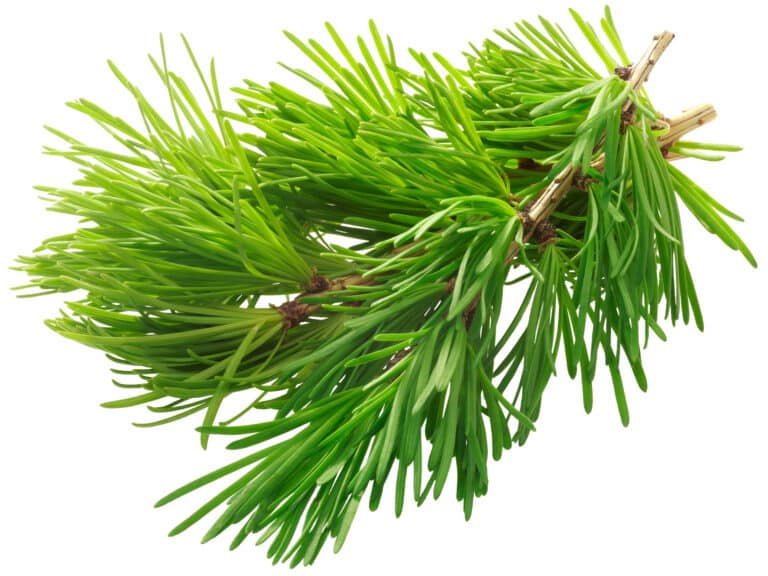Taxifoliol

For a long time, the larch was somewhat neglected. Although the wood industry has valued it for many years because of its longevity and enormous resistance, it was not considered to have healing or beneficial powers. In the meantime, however, science has discovered that larch contains extremely beneficial substances. One of them is Taxifoliol or the bioflavonoid dihydroquercitin. The powder, which is light yellow or white in its pure state, belongs chemically to the flavanonols and is an organic compound. Larch has a relatively high proportion of Taxifoliol: It can be up to four percent. The exact proportion depends on the region and the climatic conditions. The harsher the climate at the tree’s location, the more Taxifoliol is contained in the wood. This substance contributes significantly to the wood’s natural resistance to weathering, pests, and UV rays. These special properties are increasingly being used in medicine and cosmetics.
How the substance is obtained
In wood production, the lower stem ends of the tree are considered waste products. For the extraction of Taxifoliol, they are debarked and chopped. In the laboratory, it can then be determined how much TAXIFOLIOL (dihydroquercetin) is contained in the chopped chips. TAXIFOLIOL, which has a purity of up to 88 percent, is then extracted. In a further process (multi-stage liquid chromatography), a degree of purity of almost 100 percent can even be achieved. Unwanted substances such as resins can be reliably removed by this process. Incidentally, the flavonoid similar to quercetin is usually extracted from the Japanese larch.
The effect of dihydroquercetin
The substance impresses with numerous remarkable effects. For example, it is said to be able to inhibit cancer cell growth within the ovaries in vitro. Also in vitro, it improves the effectiveness of various antibiotics in MRSA infections. In addition, plant extracts containing Taxifoliol have already shown antimicrobial activity against the dreaded bacterial species Streptococcus sobrinus. In addition, the extract is said to have a positive effect on diseases of the cardiovascular system.
Studies also showed that Taxifoliol is completely non-toxic, even in high doses. Even with internal and prolonged use, no irritations occurred.
Taxifoliol in cosmetics and skin care
Taxifoliol occupies a special position among all herbal and antimicrobial agents, because it is not only effective against numerous infectious diseases, but also against skin impurities and inflammatory processes. It develops a high antibacterial potential even in very low doses.
Already in 2010, findings were published according to which the larch extract reduces or prevents the formation of inflammatory cytokines and contributes to a decrease in skin inflammations, both when applied internally and externally. Thus, the active substance could be used as a new and effective therapeutic agent for neurodermatitis. Furthermore, Taxifoliol is said to have a much stronger effect as an antioxidant than resveratrol, for example.
A very good inhibiting effect on the growth of Candida albicans has also been proven. Finally, the extract can also be used to treat dandruff and an itchy scalp.
Fact Sheet Taxifoliol
INCI: Dihydroquercetin
CAS number: 480-18-2
EC No.: 207-543-4
Description: white to pale yellow solid
Extraction: from larch wood
Melting point: 227 degrees Celsius (decomposition)
Solubility: rather poor in water
Indications: For inflammatory skin diseases and problems (also acne), against dandruff and itchy scalp.
Taxifoliol in larch extract as an anti-hair loss active ingredient
As Larix Europaea Wood Extract, an active ingredient containing Taxifoliol has been launched by Givaudan in 2 active ingredients. REDENSYL reduces hair loss and Darkenyl reduces greying of hair.
Taxifoliol as an innovative active ingredient for premium cosmetics
With its strong antioxidant, antibacterial and anti-inflammatory properties, Taxifoliol from the wood of the larch is a highly effective active ingredient for exclusive cosmetics. It is important that the substance has a high degree of purity, which is easily achieved with methods such as liquid chromatography. Furthermore, the larch extract should be free of additives, if possible. The wide range of applications in combination with the very good tolerability (so far, no negative side effects are known!) make Taxifoliol an ideal active ingredient for sophisticated products.
If required, Cosmacon will be happy to formulate exclusive formulations for your target group.
Literature:
TAXIFOLIOL as a Promising Ingredient of Cosmetics for Adult Skin.
Micek I, Nawrot J, Seraszek-Jaros A, Jenerowicz D, Schroeder G, Spiżewski T, Suchan A, Pawlaczyk M, Gornowicz-Porowska J.Antioxidants (Basel). 2021 Oct 15;10(10):1625.
Physical and Chemical Stability of Formulations Loaded with TAXIFOLIOL Tetra-octanoate.
An HJ, Lee Y, Liu L, Lee S, Lee JD, Yi Y.Chem Pharm Bull (Tokyo). 2019 Sep 1;67(9):985-991
Nawrot J, Budzianowski J, Nowak G, Micek I, Budzianowska A, Gornowicz-Porowska J.Int J Mol Sci. 2021 Apr 23;22(9):4428